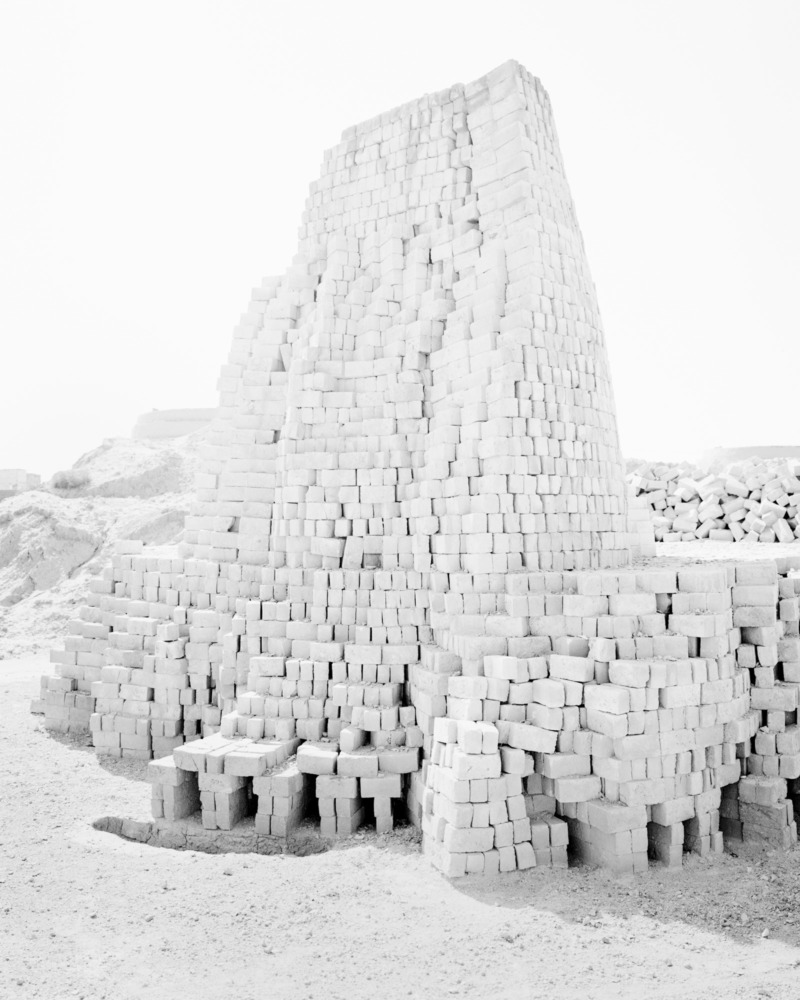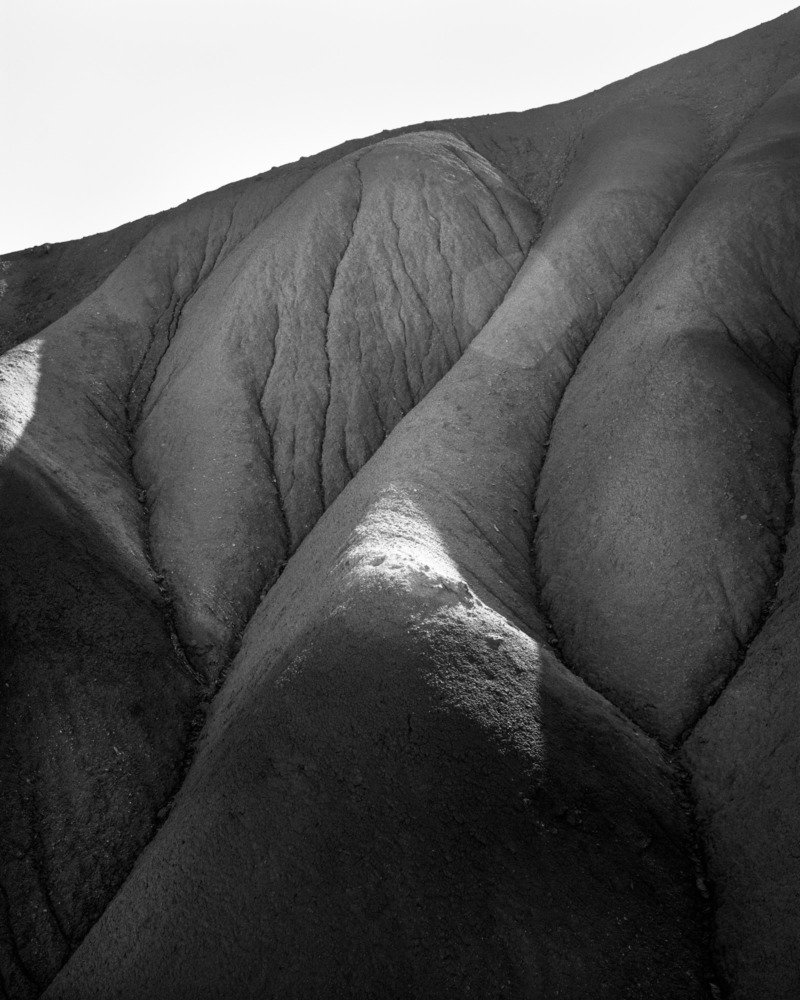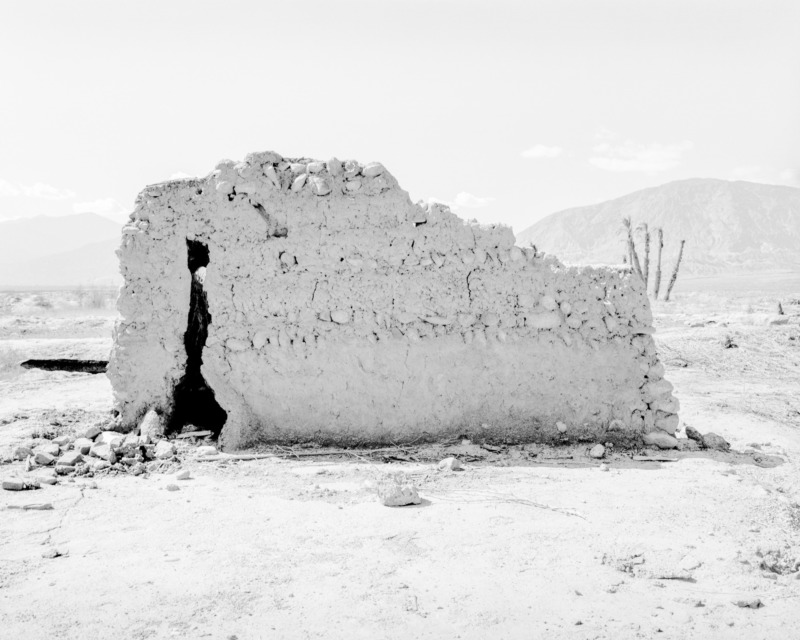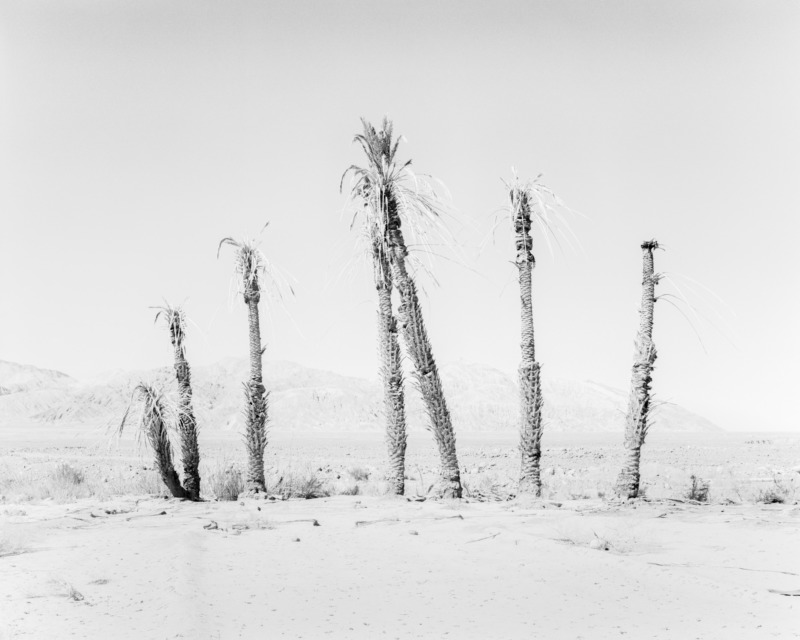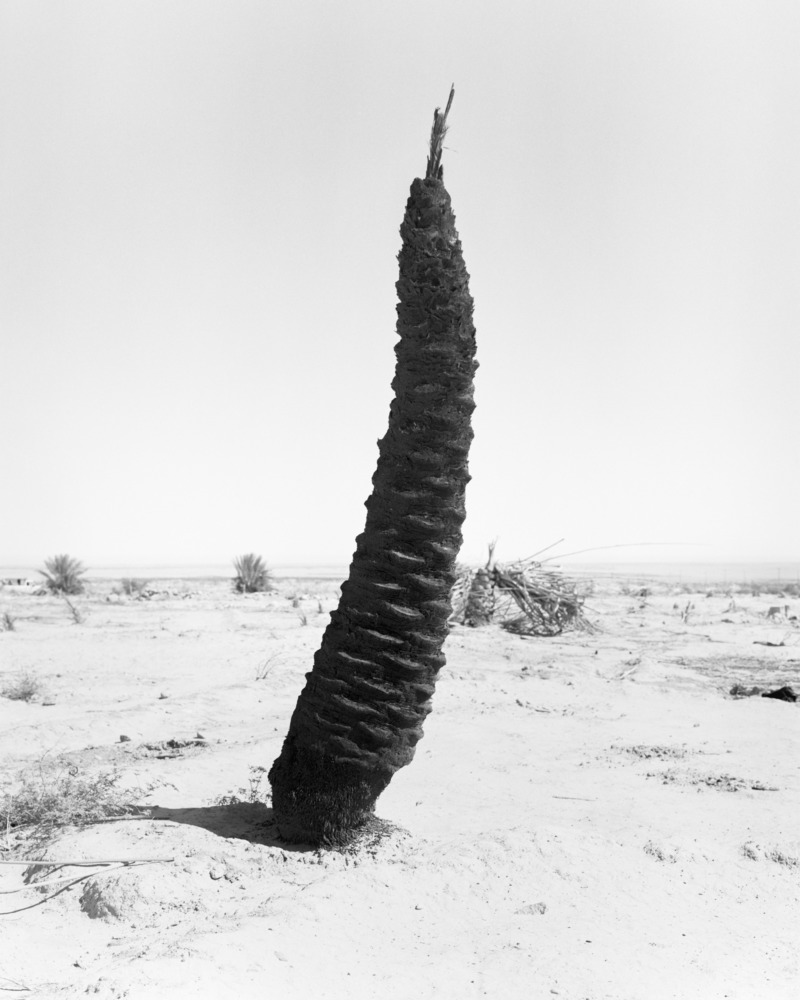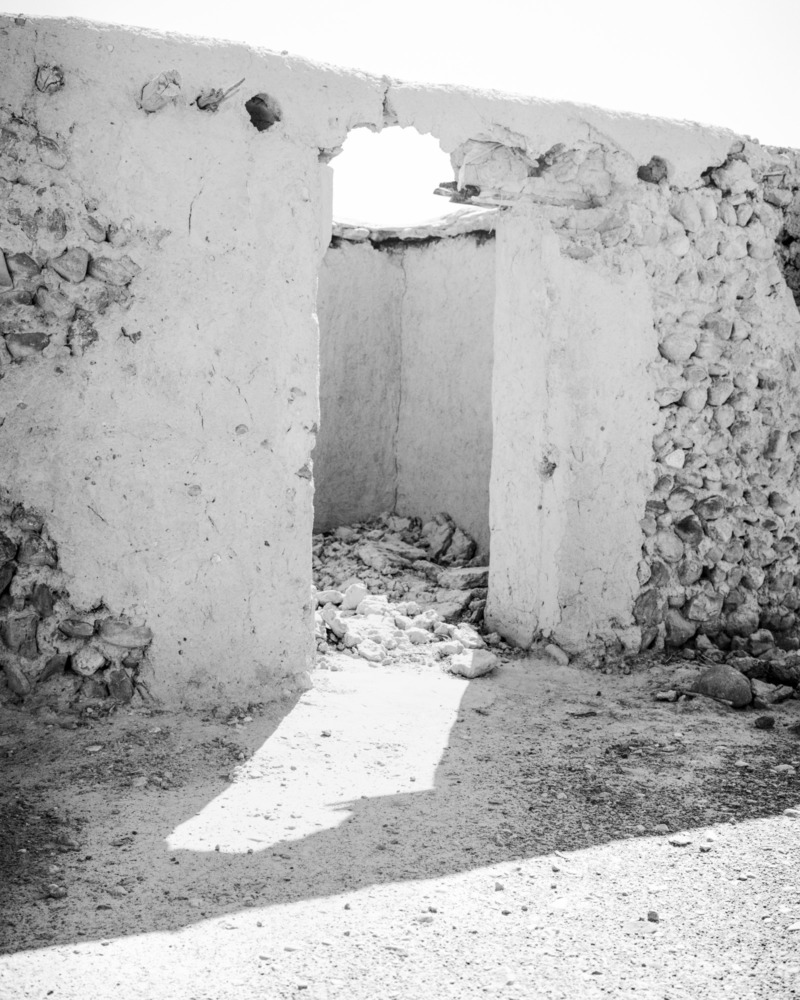Sybren Vanoverberghe – Conference Of The Birds
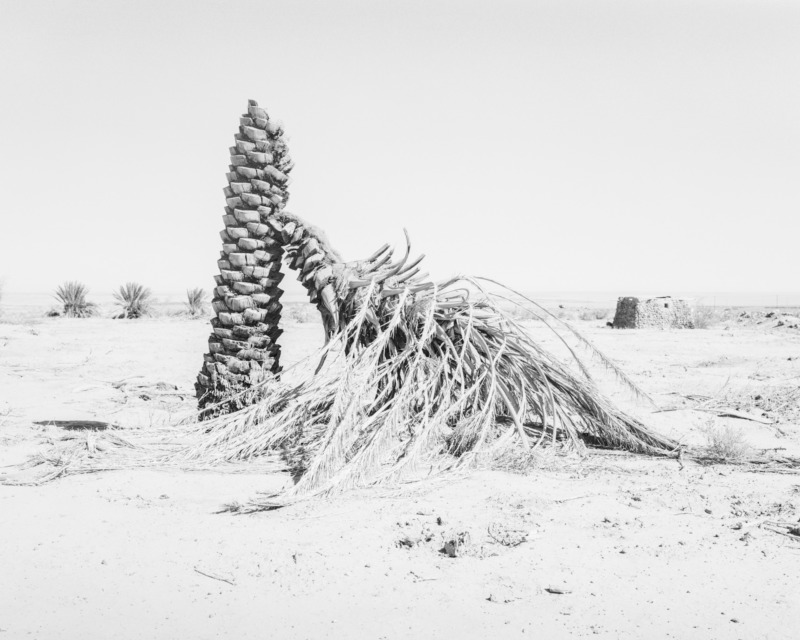
Photography has a long – and often ignoble – history as a technology used to gather information about places or landscapes, functionally related to mapping and surveys. Ignoble because of how frequently this use was linked to colonial projects where the power to render territory as information, making it visible through photography (and other forms of imaging), was an expression of the power to seize and hold that territory, facilitating its exploitation on account of the information it provided, but also through the symbolic control over the subject that is exerted by these diverse means of representation, and photography in particular. This undoubtedly stands in the background of Sybren Vanoverberghe’s Conference of the Birds, a series of pictures that essentially ‘survey’ what we’re told is a destroyed Iranian village. The technique that Vanoverberghe uses here is to systematically move around the space of this village, or rather the area where it used to be, and make pictures that ‘map’ the space, so that elements in one image tend to reappear in the next. The result is a shifting, composite view of this place, but one that resists adding up to a complete picture.
Historically, the premise of photography-as-information was linked to the notion that photographic description could in a sense contain its subject, that the ‘likeness’ photography provided was more accurate in its verisimilitude than anything that had previously been achieved. This drew on the conviction, reaching its height in the 19th Century, that new forms of classification and analysis would definitively render the physical world transparent to the probing gaze of scientific knowledge. Such thinking suggested that there was, essentially, no space between the classification and its subject, that one could be overlaid almost perfectly onto the other. Places and people – the urban industrial poor as well as the colonial Other – were also open to this scrutiny, where to be known was to be controlled. Vanoverberghe takes on something of that pseudo-scientific spirit, using photography as a means of gathering information, or at least seeming to, but he deploys it in an implicitly critical and questioning way, which is unsurprising, given the drift of his work to date. In fact, this concern for the materiality of history seems to be a defining theme of his practice.
Here he tackles it in perhaps a more straightforward way than previously; where his earlier 2099 uses a variety of pictorial techniques, in this case, Vanoverberghe sticks to one fairly plain visual style. But there is also a fundamental consistency at work here too, down to the sense of actual, as well as historical, circularity in how the pictures are related. What stands out is a sense of our relationship to the past as something ambiguous and unresolved, a constellation of possible answers. This is not a photographer taking on a single historical ‘theme’ and building a project around that; Vanoverberghe undertakes an investigation that is at once more literal – he studies the terrain and the photographs are the product of that study – but also refuses the very terms that would make such a study comprehensible. However comprehensive the mapping seems to be, it actually emphasises the limitations of what can be made visible in this way. The pictures link together across the space of the former village, we can see the repeated elements – a clump of palm trees in the foreground of one picture moves to the background of another, for example – everything seems to be accounted for, and yet the more we look the more discontinuities become apparent; there are gaps in the record.
Vanoverberghe surely knows this, of course, and pointing out these ‘gaps’ is not to indicate a lapse in the work, but on the contrary, is perhaps its whole point. They return our attention to the origins of this survey methodology and its historical context in the use of photography as a technology of power. Especially within the domain of colonialism, its symbolic (as well as literal) appropriation of physical space acted as a form of visual mastery, a gaze that attempts to encompass and contain everything. So Vanoverberghe is not just making use of these processes as a formal conceit, he actively highlights their limitations within a particular historical context, a critique that is enacted in the very structure of the work – a structure, in fact, that actually makes this context apparent to begin with. Pointing to the failure of this symbolic mastery calls into question the historical logic of the colonial project, through the whole complex of thought that supported it. At the same time, the work suggests we are still living with many of its legacies, given that the village is so conspicuously a ruin, something destroyed and hollowed out. Even as we see the failure of photography’s visual mastery, such knowledge can’t undo the damage that has been done.
This terrain contains many histories, then, all superimposed on one another, histories of habitation and destruction, colonisation and liberation. These only become apparent as absences, as something that photography can’t readily show even in terms of the very frameworks and material that these histories have themselves imposed. More broadly, Vanoverberghe is questioning his chosen medium in its role as a carrier of information, as a way of knowing the world, because the ‘map’ he’s creating here, beyond its wider historical resonance, must also remain incomplete as a form of knowledge in itself; nothing could ever be complete enough. That’s the other implication of the ‘gaps’ we see in the recording process; these are the points at which photography’s attention to the visible, the observable, gives out. There is an inevitable tension between the portrait of the place that the work as a whole provides, and the place itself. What this tension comes down to is the way that photography tends to exist almost in parallel with its subject; Vanoverberghe’s mapping technique teases us with the question of which is the real space, and which is the photographic one. These do overlap at some points, but they certainly don’t coincide.
The apparently straightforward manner of the work adds to his already complex stylistic repertoire, though the way in which it evokes the circular, multi-valent nature of historical time still connects to the overall pattern of Vanoverberghe’s concerns. What he adds here is a more precise structural element, so that the meaning of the work extends in large measure to the relationship between the images, not just in the obvious aspect of how they (supposedly) map the village, but also with regard to how this effort relates in various ways to the history of photography and its uses. There is also a clear interest in the nature of destructive processes, a sense that the order and coherence we try to impose on the world around us is, by its very nature, fragile. Everything is caught up in the turmoil of this historical unfolding and there is rarely a vantage point from which it might become comprehensible. What remains is just a bewildering succession of possibilities that even as we try to grasp them, and no matter how finely graded the technique of mapping, recede almost unknowably into the past.

